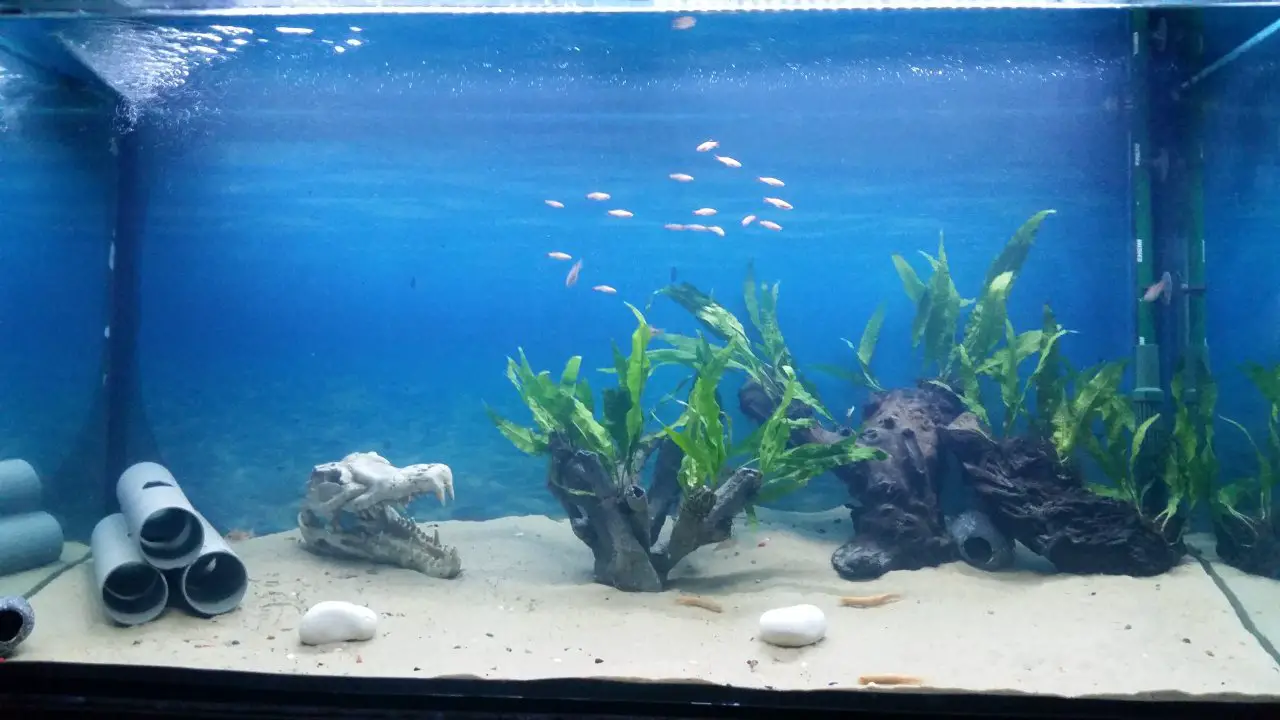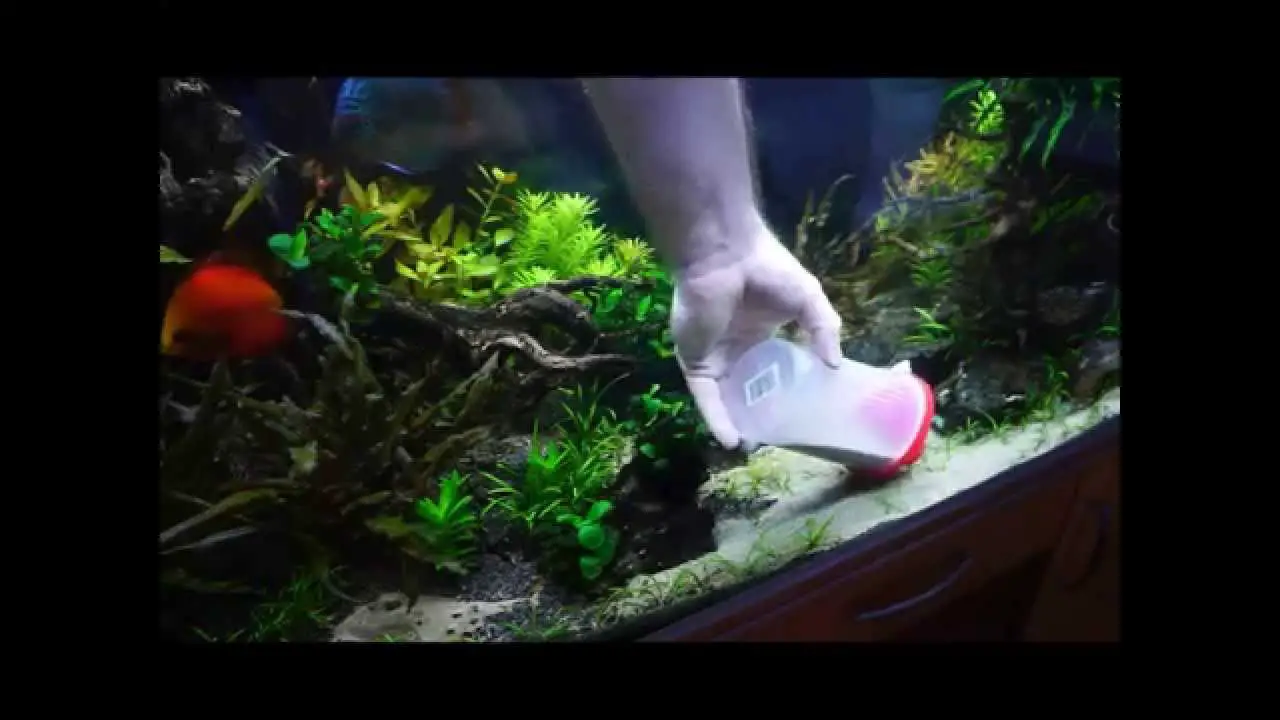If you’re an aquarium enthusiast, you may be familiar with the concept of adding sand to your freshwater tank. However, the process of adding sand to an established aquarium can seem daunting and risky. In this guide, we’ll explore the steps you need to take to safely add sand to your freshwater aquarium and ensure the health of your aquatic pets.
From choosing the right type of sand to preparing your tank and minimizing disruption to your fish, we’ll cover everything you need to know to successfully add sand to your established freshwater aquarium. With our expert tips and guidance, you can confidently enhance the aesthetic appeal and overall health of your aquarium.
- Prepare the new sand by rinsing it with clean water until the water runs clear.
- Remove the fish from the tank and place them in a temporary container with some of the old tank water.
- Use a gravel vacuum to remove the old substrate, being careful not to disturb the plants or decorations.
- Add the new sand to the tank, creating a slope if desired.
- Refill the tank with the old tank water and add a water conditioner.
- Return the fish to the tank and monitor the water quality closely for the next few days.

How to Add Sand to an Established Freshwater Aquarium
Adding sand to an established freshwater aquarium can be a daunting task for many aquarium enthusiasts, but it can be done with proper planning and execution. Sand is an essential component of a healthy ecosystem in the aquarium, as it provides a natural habitat for beneficial bacteria and fish. In this article, we will guide you on how to add sand to an established freshwater aquarium.
Preparation
Before adding sand to an established freshwater aquarium, you need to prepare the following items:
- Aquarium vacuum
- Sand substrate
- Bucket
- Sieve
Start by turning off all the aquarium equipment, including the filter and heater. Next, remove the fish and plants from the aquarium and keep them in a separate container with water from the aquarium. Drain the aquarium water into a bucket for later use.
Removing the Old Substrate
To add sand to an established freshwater aquarium, you need to remove the old substrate first. Use an aquarium vacuum to remove as much of the old substrate as possible. Make sure to vacuum the gravel thoroughly to remove any debris or waste.
Once you have removed the old substrate, rinse it with water and sieve it to separate any larger debris. Set it aside for later use.
Adding the Sand Substrate
After removing the old substrate, it is time to add the new sand substrate. Rinse the sand with water to remove any dust or debris. Add the sand to the aquarium using a cup or a funnel. Spread the sand evenly across the aquarium floor.
Filling the Aquarium with Water
Once you have added the sand substrate, you need to fill the aquarium with water. Use the bucket to add the water slowly to avoid disturbing the sand substrate. Once the aquarium is filled, turn on the equipment and let it run for a few hours before adding the fish and plants.
Benefits of Adding Sand to an Aquarium
Adding sand to an established freshwater aquarium has several benefits, including:
- Provides a natural habitat for beneficial bacteria and fish
- Improves the overall aesthetic appeal of the aquarium
- Helps to maintain a healthy ecosystem by filtering waste and debris
Sand vs. Gravel Substrate
While both sand and gravel substrates have their advantages, sand is generally considered better for freshwater aquariums. Sand provides a more natural habitat for beneficial bacteria and fish, and it is easier to clean than gravel. Additionally, sand does not trap debris and waste as easily as gravel, which can help to maintain a healthy ecosystem in the aquarium.
Cleaning and Maintenance
To maintain a healthy ecosystem in the aquarium, it is essential to clean and maintain the sand substrate regularly. Use an aquarium vacuum to remove any debris or waste from the sand substrate. You can also use a sieve to sift through the sand and remove any larger debris.
Conclusion
Sand is an essential component of a healthy ecosystem in an aquarium. By following the steps outlined in this article, you can add sand to an established freshwater aquarium with ease. Remember to prepare all the necessary items, remove the old substrate, add the new sand substrate, and fill the aquarium with water slowly. With proper cleaning and maintenance, your aquarium will thrive with the new sand substrate.
Frequently Asked Questions
Adding sand to an established freshwater aquarium can be tricky, and many people have questions about the process. Here are some common questions and answers:
Q: Why would I want to add sand to my aquarium?
There are several reasons you might want to add sand to your aquarium. Sand can provide a natural look and texture to the bottom of your tank, which can be more appealing than bare glass or rocks. It also provides a substrate on which beneficial bacteria can grow, which helps maintain a healthy ecosystem in your aquarium. Additionally, sand can be beneficial for certain types of fish or plants that prefer a sandy environment.
However, it’s important to note that not all aquariums need sand, and in some cases, it can actually be detrimental. Make sure you do your research and consider the specific needs of your aquatic inhabitants before adding sand to your tank.
Q: Can I add sand to an established aquarium without draining it?
Yes, it is possible to add sand to an established aquarium without draining it completely. However, it can be a bit more challenging than starting with a bare tank. First, you’ll need to remove any decorations or plants that are in the way. Then, carefully pour the sand into the bottom of the tank, making sure not to disturb any of the existing substrate or stir up debris. It’s also important to rinse the sand thoroughly beforehand to remove any dust or debris that can cloud the water.
After adding the sand, you may need to do a partial water change to help clear up any cloudiness or debris that was stirred up during the process. You’ll also want to monitor the water quality closely for the first few days to ensure that the sand isn’t causing any issues with the pH or other parameters.
Q: How much sand should I add to my aquarium?
The amount of sand you should add to your aquarium depends on the size of your tank and the depth of substrate that you want. As a general rule of thumb, a depth of 1-2 inches of sand is usually sufficient. However, if you have certain plants or fish that require a deeper substrate, you may want to add more. Just be sure not to add too much, as this can create anaerobic pockets that can be harmful to your aquatic inhabitants.
It’s also important to consider the type of sand you’re using, as some types are denser than others and will require more or less volume to achieve the desired depth.
Q: What type of sand should I use in my aquarium?
There are many different types of sand that can be used in an aquarium, but not all are created equal. Some types of sand, such as beach sand or sand from construction sites, can contain harmful chemicals or pollutants that can be harmful to your fish. Others may be too fine or too dense to provide a suitable substrate for your plants or inhabitants.
The best type of sand to use in an aquarium is specifically made for aquariums and is designed to be safe and beneficial for aquatic life. Look for sand that is labeled as “aquarium safe” or “fish tank sand,” and avoid any that are labeled for use in construction or landscaping. You’ll also want to consider the grain size and composition of the sand to ensure that it will provide the right texture and substrate for your specific needs.
Q: Can I mix sand with my existing substrate?
Yes, it is possible to mix sand with your existing substrate, but it can be tricky to get the right balance. First, you’ll need to remove any decorations or plants that are in the way. Then, carefully pour the sand into the tank and mix it thoroughly with the existing substrate. Be sure to rinse the sand thoroughly beforehand to remove any dust or debris that can cloud the water.
After mixing the sand, you may need to do a partial water change to help clear up any cloudiness or debris that was stirred up during the process. You’ll also want to monitor the water quality closely for the first few days to ensure that the sand isn’t causing any issues with the pH or other parameters. Mixing sand with your existing substrate can be a great way to add texture and variety to your tank, but it should be done carefully and with consideration for the needs of your aquatic inhabitants.

Adding sand to an aquarium with water the clean and easy way!
In conclusion, adding sand to an established freshwater aquarium can be a daunting task, but it is essential for the health and well-being of your aquatic pets. By following the steps outlined above, you can ensure that the process is smooth and successful. Remember to always rinse the sand thoroughly before adding it to the tank, and to take your time when filling the aquarium to avoid disturbing the substrate.
Additionally, it is important to monitor the water quality after adding sand to the tank, as it can cause a temporary increase in ammonia levels. Be sure to perform frequent water tests and water changes to maintain a healthy environment for your fish and plants.
Overall, adding sand to an established freshwater aquarium can be a rewarding experience that enhances the visual appeal of your tank while promoting a healthier environment for your aquatic pets. With the right preparation and care, you can enjoy a thriving and beautiful aquarium for years to come.
